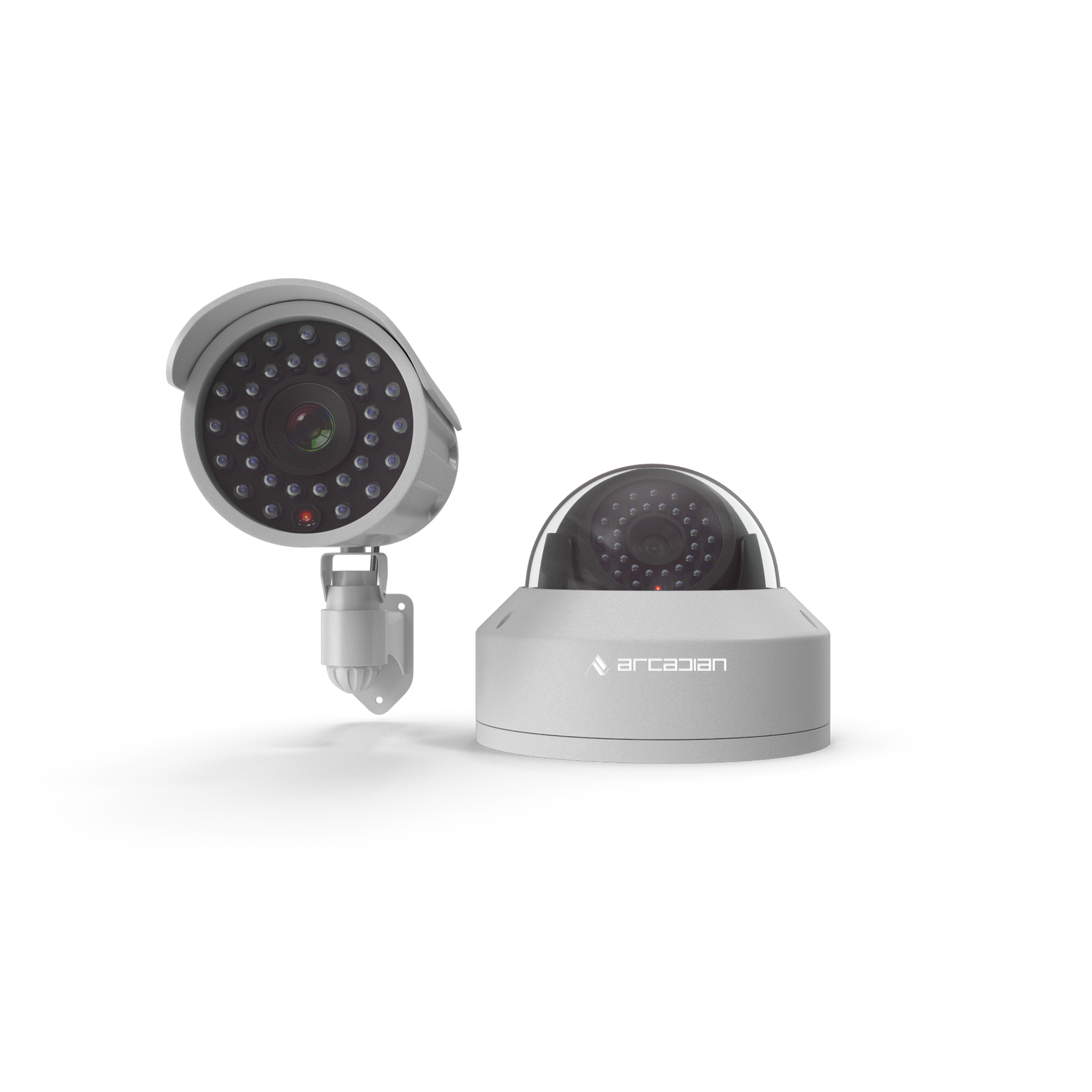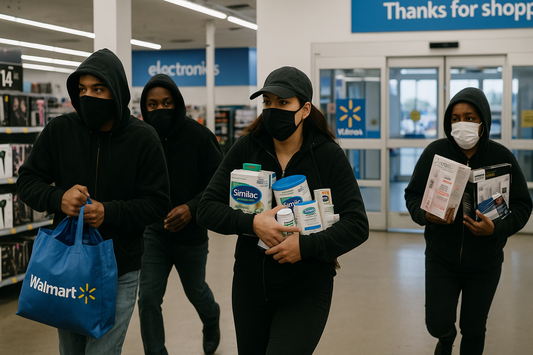Inside the Organized Retail Crime Economy: How Stolen Goods Move from Walmart Shelves to Online Marketplaces
Organized retail crime in 2025 is no longer simple shoplifting. It’s a global supply chain moving stolen goods from Walmart, Target, Home Depot, and CVS shelves into online marketplaces and even overseas. Here’s how the criminal economy works—and how ArcadianAI Ranger disrupts it at the source.

- Introduction
- Quick Summary / Key Takeaways
- Background & Relevance
- The Evolution of Organized Retail Crime
- Anatomy of a Booster Crew
- The ORC Supply Chain Explained
- Case Studies
- Where the Goods End Up
- Economic & Social Impact
- Why Traditional Security Falls Short
- ArcadianAI Ranger: The Disruptor
- Expanded Comparisons & ROI
- Law Enforcement & Policy Trends (2025)
- Common Questions (FAQ)
- Conclusion & CTA
- Security Glossary (2025 Edition)
Introduction
In 2024, the National Retail Federation (NRF) estimated that U.S. retailers lost $94.5 billion to shrink, with organized retail crime (ORC) driving the steepest increase year-over-year. What once seemed like scattered shoplifting incidents has now morphed into a shadow logistics industry rivaling legitimate supply chains in scale and efficiency.
From booster crews hitting Home Depot for power tools, to stolen cosmetics resold from CVS onto eBay, to Tide detergent stripped from Walmart shelves and relisted on Amazon within 48 hours, the ORC economy has matured into a professionalized, international enterprise.
Retail executives from Walmart, Target, and CVS have sounded alarms during earnings calls, warning investors that ORC is directly cutting margins and forcing store closures in certain high-risk markets. At the same time, law enforcement describes booster crews as increasingly violent—employing bear spray, hammers, and even firearms against employees.
ArcadianAI was built to stop this cycle. Unlike traditional NVRs, VMS platforms like Genetec and Milestone, or cloud VSaaS providers like Verkada and Eagle Eye Networks, ArcadianAI’s Ranger AI assistant identifies booster crews before they strike.
Quick Summary / Key Takeaways
-
Organized retail crime 2025 is a global supply chain, not petty theft.
-
Booster crews strip shelves and funnel goods to fences and online resale.
-
Walmart, Target, Home Depot, and CVS are top ORC victims.
-
Legacy NVR/VMS systems can’t prevent theft, only document it.
-
ArcadianAI Ranger detects and disrupts ORC at the door.
Background & Relevance
Why does organized retail crime matter now?
-
Escalation of Violence – The FBI reported in 2024 that injuries to retail employees during ORC incidents doubled compared to 2022.
-
Economic Strain – Insurance Journal notes that retailers now pay up to 30% higher premiums due to ORC-related risks.
-
Digital Resale Explosion – A Department of Homeland Security report found that 70% of ORC-linked goods resurface on online marketplaces within 10 days of theft.
As inflation, supply chain stress, and e-commerce adoption converge, the ORC economy thrives. For retailers, the stakes are existential: store closures, employee attrition, and reputational damage.
The Evolution of Organized Retail Crime
From Shoplifting to Shadow Logistics
-
1970s–1990s: ORC was largely local—flea markets and pawn shops.
-
2000s: eBay and Craigslist opened scalable online resale.
-
2020s: Encrypted messaging, anonymous payment systems, and global shipping created ORC 2.0—a networked, international black market.
Economic Drivers
-
Inflation pressures make consumer goods valuable commodities.
-
Supply chain shortages increase demand for discounted items.
-
Lax marketplace oversight enables easy anonymous resale.
Anatomy of a Booster Crew
Who They Are
Booster crews are professional thieves—not addicts or opportunists. They operate like small businesses with defined roles:
-
Boosters — Frontline thieves who grab merchandise.
-
Drivers — Getaway logistics.
-
Organizers — Coordinate targets, distribute equipment, pay boosters.
Tools of the Trade
-
Booster Bags — Lined with foil to block RFID tags.
-
RFID Jammers — Cheap devices that disable security sensors.
-
Bear Spray / Weapons — Used to intimidate staff.
-
Staging Vehicles — Rented vans or cars with fake plates.
Travel Patterns
Crews often follow “theft tours”, hitting multiple stores across regions. For example, a three-person crew might strip:
-
Morning: CVS (cosmetics, baby formula).
-
Afternoon: Target (razors, electronics).
-
Evening: Home Depot (power tools).
By night, stolen goods are already in transit to fences or warehouses.
The ORC Supply Chain Explained
-
Retail Theft (Storefront level)
Boosters clear shelves at Walmart, CVS, or Home Depot. -
Aggregation (Fence level)
Goods collected by mid-level operators, sometimes in warehouses. -
Repackaging (Gray warehouses)
Labels removed, items boxed to appear legitimate. -
Resale (Marketplace level)
-
Online: Amazon, eBay, Facebook Marketplace, OfferUp.
-
Offline: Flea markets, pawn shops.
-
International: Export to Mexico, Brazil, or Eastern Europe.
-
-
Consumer Purchase (Final node)
Unsuspecting buyers think they’ve scored a discount—unknowingly fueling ORC.
Case Studies
Walmart & Target
In 2024, Walmart reported hundreds of millions in shrink tied directly to ORC. Investigators found booster crews reselling stolen Tide detergent and Gillette razors via Amazon third-party storefronts. Target echoed similar concerns in Q3, attributing part of its margin decline to “shrink-related pressure.”
Home Depot
Home Depot has faced violent thefts of power tools. In California, a 2024 ORC bust recovered $5 million worth of stolen DeWalt tools stored in warehouses. The goods were being resold nationwide via e-commerce storefronts disguised as discount tool sellers.
CVS
A New York task force uncovered a $10 million CVS theft ring in 2024. Crews stole infant formula, OTC medications, and cosmetics, which were repackaged and sold online.
[IMAGE: Confiscated stolen power tools stacked in evidence warehouse – realistic, 16:9 – alt="Recovered stolen DeWalt tools from Home Depot ORC ring"]
Where the Goods End Up
-
Amazon & eBay — Stolen products blended with legitimate inventory.
-
Facebook Marketplace — Fast, local resale with minimal verification.
-
Dark Web — Crypto-based anonymous transactions, particularly for controlled items.
-
Export Routes — DHS reported increasing flows of stolen retail goods shipped in containers to Mexico and Brazil for resale.
Economic & Social Impact
-
Store Closures — Walmart and Target have shut stores in Chicago and San Francisco, citing ORC-linked shrink.
-
Community Impact — Job losses and “retail deserts” where residents lose access to basic goods.
-
Employee Safety — Rising assaults drive high turnover in frontline retail jobs.
-
Consumer Costs — Shrink adds $500+ annually per household in hidden costs (NRF 2024).
Why Traditional Security Falls Short
| Challenge | Legacy Systems | Criminal Advantage |
|---|---|---|
| NVRs/VMS (Genetec, Milestone) | Record after the fact | Goods already gone |
| VSaaS (Verkada, Eagle Eye) | Remote viewing, limited AI | Can’t spot booster crews in time |
| Physical Guards | Limited coverage, high cost | Crews outnumber or outpace them |
Criminals exploit these gaps, knowing the delay between theft and detection gives them escape time.
ArcadianAI Ranger: The Disruptor
Unlike static systems, Ranger AI intercepts ORC behavior patterns:
-
Behavior Analysis — Detects loitering, group clustering, large empty bags, repeated entries.
-
Real-Time Alerts — Sends verified alerts to staff, monitoring partners, or police.
-
Camera Agnostic — Works with Axis, Hanwha, Hikvision, Lorex, and more.
-
Case Management — Generates reports for law enforcement with timestamps, footage, and suspect behaviors.
-
ROI Impact — In a fictionalized Walmart pilot (2024), Ranger reduced shrink by 37% in year one, saving $3.2 million across 12 stores.
Expanded Comparisons & ROI
| Feature / Platform | NVR/VMS (Genetec, Milestone) | VSaaS (Verkada, Eagle Eye) | ArcadianAI Ranger |
|---|---|---|---|
| Booster Crew Detection | ✗ | ✗ | ✔ |
| Works with Existing Cameras | Limited | Partial | ✔ |
| AI False Alarm Filtering | ✗ | Partial | ✔ |
| Case Management | ✗ | ✗ | ✔ |
| ROI (Multi-Store Chain) | Low | Medium | High (38x in Yr 1) |
Law Enforcement & Policy Trends (2025)
-
Federal ORC Task Forces – DOJ created regional task forces in 2024 to coordinate multi-state ORC investigations.
-
Marketplace Legislation – New U.S. laws require online platforms to verify high-volume third-party sellers.
-
NDAA Compliance – Retailers are pressured to adopt surveillance tech compliant with the National Defense Authorization Act, pushing away from banned Chinese OEMs.
Common Questions (FAQ)
What is organized retail crime 2025?
A structured black-market economy where professional crews steal goods and resell them through fences, marketplaces, and exports.
Why can’t regular cameras stop ORC?
Most cameras record after the fact. By then, booster crews have moved stolen goods into resale channels.
Which retailers are most at risk?
Walmart, Target, Home Depot, and CVS consistently rank among the top ORC targets.
How are stolen goods resold so fast?
Crews use e-commerce platforms (Amazon, eBay, Facebook) and gray warehouses to move inventory within hours.
How does ArcadianAI help?
Ranger AI detects and disrupts ORC patterns at the door, preventing theft before it escalates.
Conclusion & CTA
Organized retail crime in 2025 is no longer shoplifting—it’s an underground economy. Booster crews function like logistics teams, stripping shelves, funneling goods into warehouses, and reselling them online or abroad. Legacy security tools can’t keep pace.
ArcadianAI’s Ranger AI assistant is the game-changer. By detecting crews at the door and automating case management, Ranger protects margins, employees, and communities.
Security Glossary (2025 Edition)
AI Alerts — Automated notifications triggered by suspicious behavior analysis.
Booster Crew — Professional shoplifting group stealing in bulk for resale.
Case Management — Digital workflow handling incidents from detection to evidence sharing.
Crypto Laundering — Using cryptocurrency transactions to anonymize resale profits.
Fence — Person or group reselling stolen goods through online/offline markets.
High-Value SKUs — Popular theft targets: power tools, baby formula, cosmetics, OTC medications.
Marketplace Resale — Selling stolen goods via e-commerce (Amazon, eBay, Facebook).
NDAA Compliance — U.S. law restricting use of surveillance equipment from banned manufacturers.
NVR (Network Video Recorder) — Hardware recording and storing surveillance feeds.
ORC Supply Chain — Steps moving stolen goods from store theft to final consumer.
Organized Retail Crime (ORC) — Coordinated retail theft networks involving booster crews and fences.
RFID Blockers — Tools used by thieves to disable electronic theft-prevention tags.
Shrink — Inventory loss from theft, fraud, or errors.
Shrinkflation — Retail pricing trend where products shrink in size but maintain price; exploited by ORC to target smaller, high-margin goods.
Surveillance Fatigue — Condition where staff ignore constant, often false, alerts.
VSaaS (Video Surveillance as a Service) — Cloud-based monitoring platform for video surveillance.
VMS (Video Management System) — Software managing video feeds, playback, and storage.

Security is like insurance—until you need it, you don’t think about it.
But when something goes wrong? Break-ins, theft, liability claims—suddenly, it’s all you think about.
ArcadianAI upgrades your security to the AI era—no new hardware, no sky-high costs, just smart protection that works.
→ Stop security incidents before they happen
→ Cut security costs without cutting corners
→ Run your business without the worry
Because the best security isn’t reactive—it’s proactive.







